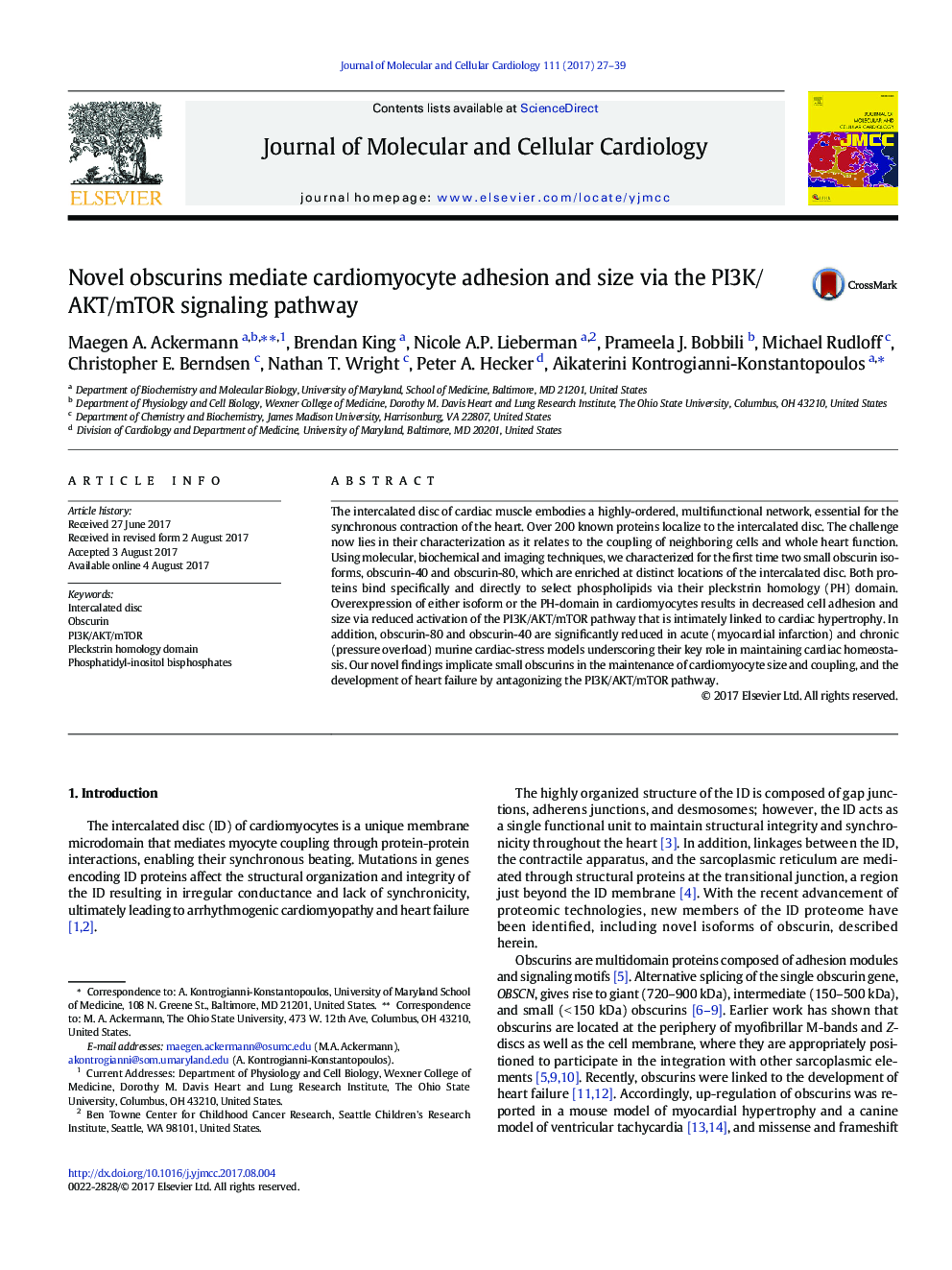| Article ID | Journal | Published Year | Pages | File Type |
|---|---|---|---|---|
| 5533627 | Journal of Molecular and Cellular Cardiology | 2017 | 13 Pages |
â¢Splicing of the OBSCN gene results in the expression of two novel small isoforms.â¢Obscurins directly interact with select phospholipids via their PH domain.â¢Obscurins function as negative regulators of the PI3K/AKT/mTOR pathway.â¢Obscurins modulate cardiomyocyte adhesion and size.
The intercalated disc of cardiac muscle embodies a highly-ordered, multifunctional network, essential for the synchronous contraction of the heart. Over 200 known proteins localize to the intercalated disc. The challenge now lies in their characterization as it relates to the coupling of neighboring cells and whole heart function. Using molecular, biochemical and imaging techniques, we characterized for the first time two small obscurin isoforms, obscurin-40 and obscurin-80, which are enriched at distinct locations of the intercalated disc. Both proteins bind specifically and directly to select phospholipids via their pleckstrin homology (PH) domain. Overexpression of either isoform or the PH-domain in cardiomyocytes results in decreased cell adhesion and size via reduced activation of the PI3K/AKT/mTOR pathway that is intimately linked to cardiac hypertrophy. In addition, obscurin-80 and obscurin-40 are significantly reduced in acute (myocardial infarction) and chronic (pressure overload) murine cardiac-stress models underscoring their key role in maintaining cardiac homeostasis. Our novel findings implicate small obscurins in the maintenance of cardiomyocyte size and coupling, and the development of heart failure by antagonizing the PI3K/AKT/mTOR pathway.
